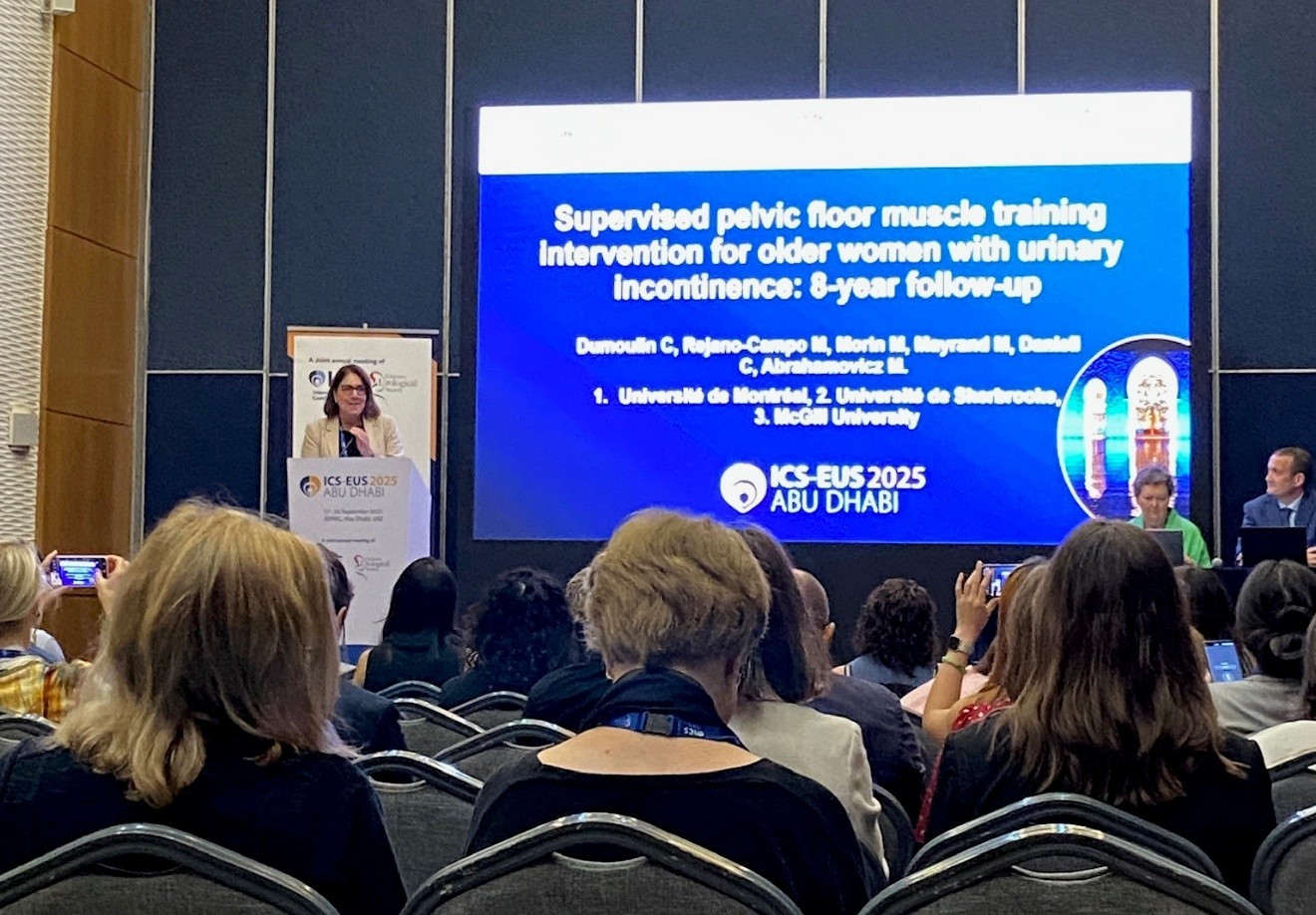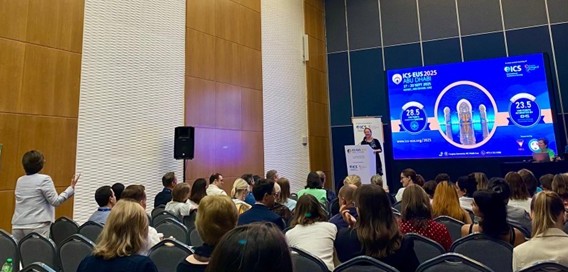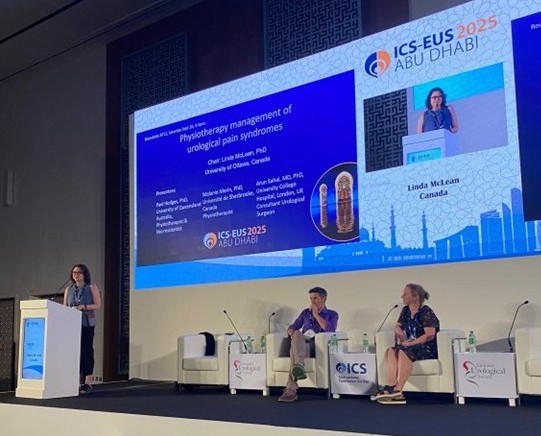The International Continence Society, in collaboration with the Emirates Urological Society, held a major congress in Abu Dhabi last September. Several CSPM members were there and proudly represented the Society!
Prof. Chantale Dumoulin (Université de Montréal) and her lab took the stage multiple times to share significant advances. Among other highlights, Prof. Dumoulin presented eight-year follow-up results in older women who had participated in a supervised pelvic floor muscle training program to reduce urinary incontinence.
The findings are clear: the program led to a significant reduction in urinary leaks, and the results were sustained eight years later. Participants also reported lasting improvements in symptoms and quality of life related to urinary incontinence. In addition, a PhD candidate from her lab presented what participants learned and continue to apply in their daily lives.
Three major themes emerged: (1) acquiring concrete skills, knowledge, and strategies; (2) positive physical, psychological, environmental, and social impacts; and (3) confidence in the program. These results underscore the importance of helping women build a personalized “toolbox” to maintain gains, even years later.

Prof. Mélanie Morin (Université de Sherbrooke) and her team also took the podium repeatedly. Still on the topic of urinary incontinence—but this time among postpartum women aged 18–45 with a significant injury after childbirth (puborectalis avulsion)—Prof. Morin showed that a supervised pelvic floor muscle rehabilitation program produced a significant reduction in urinary leaks, with effects maintained six months post-intervention.
These findings from a multicentre randomized clinical trial represent a major advance: despite this substantial injury, multimodal physiotherapy treatments remain effective for urinary incontinence. One of her PhD students also presented thesis results demonstrating the feasibility and acceptability of physiotherapy dry needling to relieve pain in women with provoked vestibulodynia. The results are promising for reducing pain during sexual intercourse. Prof. Morin’s team is preparing a larger study on this topic.

Prof. Linda McLean (University of Ottawa) and her lab also drew attention with several presentations, notably on the effects of running on the female pelvic floor. Their research suggests that pelvic floor morphology—particularly a more cranial position of the bladder neck—may influence its downward displacement independently of the load imposed during running. In addition, greater pelvic acceleration was associated with a reduction in passive pelvic floor muscle tone after running.
Prof. McLean also reported that the posterior urethrovesical angle increases after running in runners who are continent as well as those who experience incontinence during the sport. This factor therefore does not appear to be the only one involved in running-induced urinary incontinence, opening the door to new research avenues.

We congratulate our members for presenting these compelling results that advance pelvic health research!
